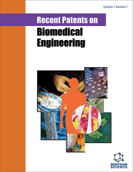Abstract
Fractionated and low molecular weight heparins comprise the main class of anticoagulants used to prevent and treat thrombosis in patients through catalysis of enzyme inhibition by plasma antithrombin. However, clinical application of heparin suffers several limitations including: reduced venous half-life, uncontrolled anticoagulant effects, hemorrhagic complications and biophysical problems. A novel covalent antithrombin-heparin (ATH) complex has recently been created that overcomes heparins deficiencies. Historical patent literature and prior art reveal a progression of earlier attempts to link heparin to antithrombin that yielded products with various degrees of functionality. Relative to heparin, the present ATH invention of matter has a vastly increased bioavailability of circulating complex, significantly increased antithrombotic activity and superior ability to neutralize clot-bound coagulation enzymes. Recently issued ATH patents describe ATH-coatings on surfaces of devices that come into contact with blood. These ATH-covered products are vastly improved in prevention of device malfunction due to thrombus formation. There is a large market related to the biomaterial coatings industry that may benefit from development of blood-contacting products containing surface-bound ATH.
Keywords: Antithrombin, heparin, antithrombin-heparin complex, thrombin, anticoagulant, antithrombotic, thrombosis, catalysis, plasma, coating
 1
1

